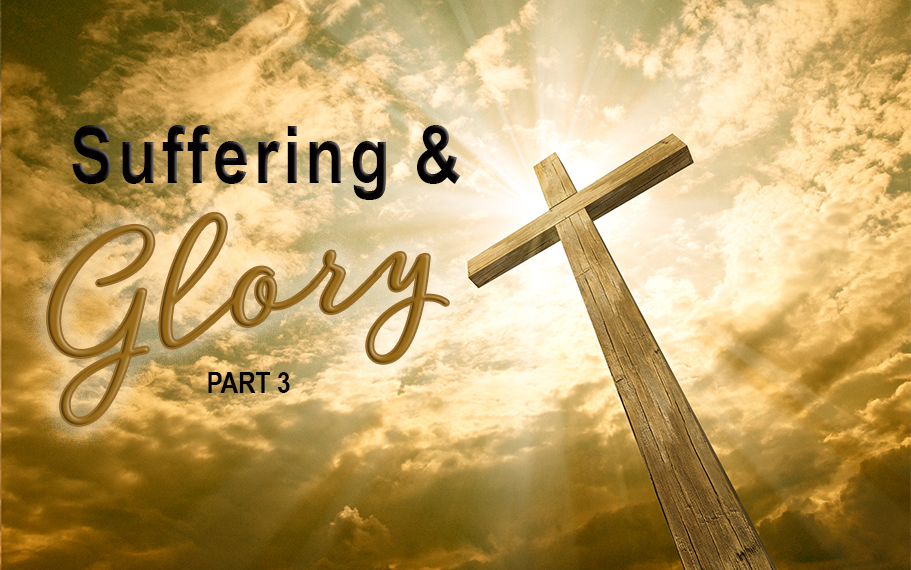Christ’s Suffering:
The Centerpiece of Human History
“And between the throne and the four living creatures and among the elders, I saw a lamb standing as though it had been slain.”
Revelation 5:6
The fifth chapter of Revelation records the mystery of Christ’s sufferings as the centerpiece of all human history. The chapter opens with a vision of the scroll sealed with seven seals in the right hand of the One sitting upon the throne.
When John sees this scroll, he then hears a voice asking what undoubtedly is the most important question that has ever been asked: “Who is worthy to open the scroll and break its seals?” There have been numerous ideas set forth about the true identity of this scroll. For simplicity’s sake, we suggest that the scroll contains the purpose of God for mankind. When the seals are broken and the scroll is opened, God’s plan in Christ is set in motion.
But John wept after hearing the question asked because no one was found worthy in heaven and earth to open the scroll and look into it. Amazingly, it is not recorded anywhere else in this book that John wept (even though he would see beasts and dragons and many other things that one would think might cause him to weep). But then he heard one of the elders tell him,
“Weep no more; behold, the Lion of the tribe of Judah, the Root of David, has conquered, so that he can open the scroll and its seven seals” (Revelation 5:5).
The elder identifies Jesus as the ‘Lion of the tribe of Judah, the Root of David’ who has conquered. Yet when John turns to view Him, it’s not a lion he sees, but a “Lamb standing, as though it had been slain” (5:6). Williams translates that verse, “a Lamb that looked as though it had been slaughtered.” In other words, the Lion has become a Lamb. It is only because the Lion was willing to become a Lamb slaughtered that the eternal purpose of God is fully realized.
That means that the cross was not just a tragic mishap of justice carried out by evil human beings (though it was that and more), but the centerpiece of history. Jesus is the Lamb slain from before the foundation of the earth. Perhaps the most important Old Testament passage that describes this is Isaiah 52:13-53:12. This Scripture teaches clearly that Jesus didn’t suffer for his own sin but for “our” infirmities, “our” sorrows, “our” transgressions, “our” iniquities. This passage reveals that Jesus is the suffering Servant of the Lord.
This passage has been used by God to bring many Jewish people to faith in Jesus. Up until the time of Jesus, Jews believed that Isaiah 53 was a Messianic passage, but after Jesus appeared, this passage caused problems because of its resemblance to the life of Jesus. For that reason, many synagogues banned it from being read in the regular haftorah reading, the weekly reading of the Prophets in the synagogue. Why? Because for most Jews, the idea of Messiah as a suffering Servant is foreign and even abhorrent. For that reason, Jesus didn’t fit the Jewish idea of the Messiah whom Israel expected to come in power and great glory.
The fact that He came to suffer an ignoble and excruciating death on a cross may have been abhorrent to Israel, but it’s exactly what the Tanakh (Old Testament) predicted would happen to him. For that reason, the Gospels record numerous occasions where Jesus took his disciples aside and tried to prepare them for his inevitable sufferings:
“From that time Jesus began to show his disciples that he must go to Jerusalem and suffer many things from the elders and chief priests, and be killed, and on the third day be raised” (Matthew 16:21).
This strategy of taking the disciples aside to prepare them for his eventual suffering is best understood in the light of the fact that first-century Jews did not have a concept of a suffering Messiah. Undoubtedly, these sessions were designed to initiate them into the biblical reality that Messiah would first come as a suffering and despised One before coming again as a reigning King. One could imagine that such teaching sessions were heavily focused on understanding Isaiah 53, the premiere chapter in the Old Testament dealing with Messiah’s sufferings. The same thing was true of those sessions in the Upper Room after his resurrection when He “opened their minds to understand the Scriptures” (Luke 24:45). That doesn’t mean He introduced them to the Scriptures for the first time; they were Jews and as such, were thoroughly acquainted with them. Rather, He gave them the interpretive key which had everything to do with the mystery that Messiah must first suffer before entering his glory.



0 Comments